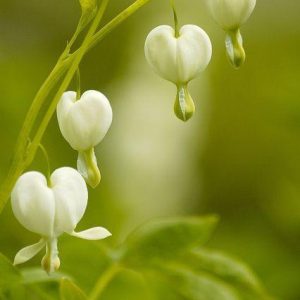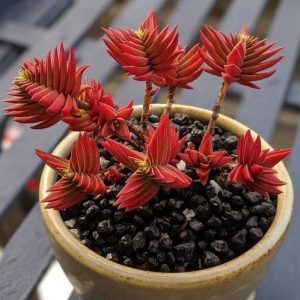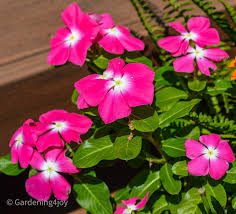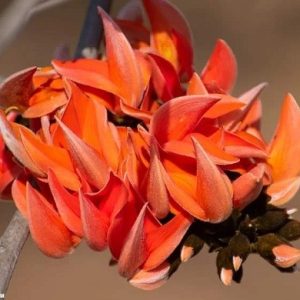Chrysanthemums, commonly called ‘mums,’ are bright and cheerful flowers often associated with the end of summer when the days start getting shorter. These hardy perennial flowers are grown best in hardiness zones 5-9.
If you are thinking of growing mums to add some color to your outdoor garden, you may have wondered, “Do mums like sun or shade?” Will they survive in partial shade, or with some dappled sunlight?
This article will discuss whether Chrysanthemums like sun or shade and how to answer this question based on a plant’s hardiness zone, as well as how a lack of sunlight will affect your mums. Let’s jump in!
Mums need 6 hours of sunlight per day. Chrysanthemums are sunlight loving perennials that love full sun conditions. If they get less than 6 hours, or spend time in the dappled shade, their blooms will not be as robust as they can be with additional time in the sun.

When adding any indoor or outdoor plants to your houseplant collection or garden, it is essential to consider their ideal growing conditions to ensure that they remain healthy and happy.
Whether you are growing chrysanthemums indoors or outdoors, these flowers are true sun lovers. While they may be able to tolerate partial shade, they will do best in an area that gets several hours of direct sunlight every day. 6 hours is usually an average benchmark, but oftentimes more is better.
If you plan to grow mums in your yard but don’t have any places that get full sun, plant them in an area that receives bright, direct light in the morning and early afternoon.
While mums add aesthetic appeal to your home as a potted plant or your garden when planted outdoors, you may also be familiar with seeing them used in bouquets, as well.
While these are both chrysanthemums, there is actually a significant difference between ‘florist mums’ and ‘garden mums.’

Chrysanthemums come in over 20,000 cultivars, but regardless of their abundant variety, all types mums fall into one of two categories: florist mums or garden mums.
Telling the difference between the two is quite simple, but can make all the difference in the success you have with your Chrysanthemums.
Florist mums are just what they sound like: chrysanthemums that are intended to be used for their floral display and cannot withstand the harshness of being planted outdoors.
These are likely the flowers used in floral bouquets and arrangements, but they can also survive as potted plants indoors.

Like florist mums, garden chrysanthemums are precisely what they sound like: chrysanthemums that can be planted in your garden.
If you are planning on planting mums outside, you must get garden mums and not florist mums, as they are much more hardy and can withstand being planted outdoors.
Garden chrysanthemums are hardy perennial plants and can survive year-round in hardiness zones 5 through 9 with proper care.

Mums are perennials that can survive in hardiness zones 5 to 9. But what does that mean, and what does that tell us about how much sun or shade they should be getting?
The truth is that a lot of important information about the conditions your plant will require can be derived from their hardiness zone. However, it is not the only factor to pay attention to when ensuring that your plant thrives.
Below, I will lay out what information you can learn from determining a plant’s hardiness zone and offer more details on where you can find other information that the hardiness zone doesn’t indicate.

Plant hardiness zones are designated areas that dictate which plants will thrive in which areas. In the United States, there are 13 different plant hardiness zones that are further divided into subsections.
Hardiness Zones break up the United States into 13 sections of ten-degree temperature ranges based on the annual minimum winter temperature average.
Understanding what hardiness zone you’re in can give you more information on whether or not chrysanthemums can survive in your garden.
If you live outside the 5-9 hardiness zone range, mums may not be the best choice for your garden. But don’t get too disappointed! You can still enjoy floral chrysanthemums for their indoor color and bring them outside in planters during the warmer months.
The U.S. Department of Agriculture (USDA) created the Plant Hardiness Zone map to determine which hardiness zone people are in based on their zip code. Check it out to see if garden mums will thrive in your area.

It is essential that you take hardiness zones into account when selecting plants that will do well in your garden and climate.
For example, the the flowers that grow in Florida will likely not survive in Minnesota because the plants that survive in those two areas have entirely different ideal growing conditions. Most of the plants that thrive in Southern California would not be able to handle the harsh midwestern winter.
Hardiness zones tell you about your plants’ ability to survive the winter. For chrysanthemums, the hardiness zone ranges from 5 to 9. This means they can withstand winter temperatures as low as -20°F and as warm as 30°F.
That is a vast range of temperatures and indicates just how hardy chrysanthemums are and how versatile their growing conditions can be. But what does all of this mean about how much sunlight mums like?

Like the USDA hardiness zones indicate how cold-resistant plants are, the American Horticultural Society’s heat zone map indicates the warmest temperatures your plants can withstand.
Just like how Florida plants would not be able to take Minnesota’s harsh winters, many of the plants grown in Minnesota would not be able to handle Florida’s hot summers.
The American Horticultural Society’s heat zone map divides the United States into 12 sections based on how many days per year the temperature exceeds 86°F, on average.

Chrysanthemums are true sun-lovers, and they can withstand both harsh winters and hot summers, making them hardy and easy to grow plants.
Mums need an average of 6 hours of direct sunlight each day. They thrive in full sunlight, and will typically bloom even more if they are in an area with more than 6 hours of direct sunlight, as long as the heat doesn’t take them out.
Hardiness zones and heat zone maps give a lot of information about the ideal temperature conditions for your plants, but there are other factors that you will need to pay attention to for your plants to thrive.

If you are worried that your garden won’t get enough sun for chrysanthemums to thrive, it’s worth giving it a shot.
As long as your mum gets several hours of intense, direct sunlight a day, they should still be able to survive and flower.
But remember that these ornamental flowers need intense sunlight, so they are not meant for planting under trees or other shaded areas.
While your plants may do fine with a few hours of sunlight a day, in order to truly thrive, they prefer to get at least six hours of direct sunlight a day.
There are several indicators to pay attention to that may indicate that your mums need more sunlight – the most obvious of which is that they aren’t producing many flowers.
Your mums need the energy they get from the sun to grow their trademark flowers, and without enough sun, you can expect a severe lack of floral display.
Even if they don’t stop growing flowers altogether, your chrysanthemums may start growing smaller flowers less frequently, with less vibrant colors than you’re typically used to. They may even start dying, or turning brown.
In addition to the lack of floral growth, your plant may compensate by growing itself more. If you notice tall, leggy offshoots with minimal floral display, this is a sign that your flowers need more sunlight.
Consider moving them to an area where they get more sunlight in your garden if you see these signs, or simply replant it in a pot or planter that you can move to a sunnier area if your garden isn’t an option.
So, do mums like sun or shade? Chrysanthemums love the sun but can withstand a relatively small amount of shade. These perennials are easy to grow and extremely hardy.
They thrive in hardiness zones 5 to 9, and garden mums like a lot of bright, direct sunlight, particularly in the morning and early afternoon.
If you live outside of hardiness zones 5 through 9, consider opting for floral chrysanthemums instead of garden chrysanthemums, and keep them in a sunny spot inside!
Either way, these bright and cheerful flowers will bring you joy, even after many of the other flowers of spring and summer have passed.





